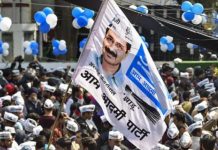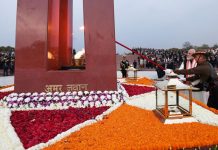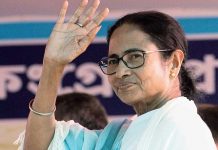Activist Teesta Setalvad has used phone records to nail several of Modi’s henchmen in the committee probing the Gujarat massacres, reports Ajit Sahi

Setalvad’s activism is bearing fruit – the ball is now in Nanavati Commission’s court.
LAST WEEK, the Central Bureau of Investigation (CBI) arrested one of Gujarat Chief Minister Narendra Modi’s key police officers in the state for alleged complicity in a fake encounter of 2006. Now, Modi’s bête noire, Mumbai-based activist Teesta Setalvad, has fired a fresh salvo invoking telephone records to show how his government and police connived to allow rampaging Hindu zealots to kill about 2,000 Muslims in Gujarat in 2002.
According to documents that Setalvad submitted last month to a commission of two retired high court judges, Modi’s office and various police officers of the state networked with each other through the massacre on February 28 and March 1 that year. She has sought to establish this through phone calls made by and received by 44 people, including the police officers, and demanded that these be examined.
The officers that Setalvad has fingered include Gujarat’s then Director-General of Police (DGP), K Chakravarti, and PC Pande, then Ahmedabad Police Commissioner who Modi later promoted as DGP. Pande had held the post of Police Commissioner in Ahmedabad at the time of the massacre, and is widely accused of willfully allowing the killings to go unchecked.
[box]
THE WHERE AND WHEN, ON RIOT DAY
Call records from February 28, 2002
5.10 AM
Ashok Bhatt at Narol, Naroda
3.56 PM
Tanmay Mehta (from CM’S office) to Narol, Naroda
3.56 PM
IK Jadeja, Meghaninagar
5.10 PM, 5.14 PM, 5.57 PM
Ashok Bhatt, Narol, Naroda
5.40 PM
AP Patel (from CM’S office) Meghaninagar
7.24 PM
Harsh Brahmbutt (from CM’S office) Narol, Naroda
7.26 PM
Harsh Bahmbutt (from CM’S office) Meghaninagar
[/box]
Setalvad has now demanded that the commission summon officers of the Central and Gujarat IB as also of the Indian Army who had been deputed to quell the killings. She has also asked the commission to summon top police officers of the time, including Pande, to depose. The list includes many of Modi’s favourite police officers, such as then Joint Commissioner of Police (JCP) MK Tandon, Additional Commissioner of Police Shivanand Jha and three deputy commissioners of police.
By targeting these police officers, Setalvad is indeed attacking the core of Modi’s government apparatus, widely accused of complicity in the massacre. As TEHELKA’s exposé of October 2007 clearly established, there was a direct nexus between Gujarat Police and killer mobs of the Hindu right-wing Bajrang Dal, the Vishwa Hindu Parishad (VHP) and the BJP.
Indeed, Setalvad once again lays the blame at Modi’s door, citing the case of three officials who worked with Modi’s Chief Minister’s Office (CMO) then. All three — Sanjay Bhavsar, OP Singh and Tanmay Mehta — filed “hurried” affidavits before the Commission this year but have evaded appearing before it. In addition, Setalvad wants the commission to force BJP and VHP leaders to depose before it too.
Pande received 15 calls from Modi’s office on the morning of February 28, the day the massacre of Muslims began. Setalvad says that the fact that Pande did not leave his officer after 11 am indicates that these calls were made by the “top echelons” to instruct him that the police must not interfere with the rampaging mobs. Indeed, at the same time, Bhavsar and Mehta in Modi’s office were talking on the phone to VHP’s Gujarat General Secretary Jaideep Patel, an accused in the massacres at Naroda Patiya and Naroda Gaam.
For the CM’S office to be in touch with Patel is indeed intriguing. It may be recalled that Patel was in charge from the VHP to escort dead bodies of 56 people, many of them Hindu activists, who had been charred to death in a fire in a train that was bringing them to Ahmedabad from Uttar Pradesh. The train had caught fire outside Godhra town’s railway station, and it is the contention of Modi’s government and the BJP-VHP that the local Muslims deliberately started the fire. It was primarily the VHP’s shutdown to protest the train deaths which stoked the violence against the Muslims and spiralled it out of control. “For the chief minister’s office to be directly in touch with the man accused of leading and inciting the massacres and rapes… suggests collusion in the violence at the highest level,” says Setalvad.
Even then Health Minister Ashok Bhatt was also talking on the phone with Patel that day. Gujarat’s then Minister of State for Home, Gordhan Zadaphia — who Modi has since forced out of the BJP — had been in communication with both Patel and Dinesh, a VHP activist and brother of VHP leader, Praveen Togadia. Another person who was in touch with then JCP Shivanand Jha is Amit Shah. Shah is today Modi’s embattled home minister who, as TEHELKA reported last week, has been running to evade arrest by the CBI in the fake encounter case.
Indeed, Modi’s woes on the 2002 massacres have worsened since the CBI arrested his former Minister for Women and Child Welfare Maya Kodnani over a year ago. Then an MLA, Kodnani and another minister, Kaushik Jamnadas Patel, too, had been in touch with JCP Jha as also several other police officers, right down to police inspector KG Erda, who is accused of facilitating the massacres of Muslims in the locality of Meghaninagar. Another police inspector KK Mysorewala, and BJP State President, Rajendrasinh Rana too were in touch with Kodnani and Patel, among others.
Two questions arise. One, why would so many police officers, from JCP down to inspectors, be talking to so many leaders of the VHP and the ministers? And two, why would the police still fail to bring an end to the violence, especially if it was in constant touch with these bigwigs in the government and the partisan outfit that had called the shutdown?
The connection appears self-evident. Modi has always said that Hindu mobs attacked the Muslims as a spontaneous reaction to the train fire in which Hindus were killed. But so many members of the VHP-Bajrang Dal-BJP stand accused of leading the mobs that killed the Muslims that records of their numerous telephonic conversations on that day suggests collusion among them, as Setalvad suggests.
Indeed, phone calls records also show that VHP men such as Babu Bajrangi, who is accused of the violence in the two massacres at Naroda Patiya and Naroda Gaam, and Atul Vaidya, who is accused of complicity in the massacre at Gulberg Society where former Congress MP Ehsan Jafri was killed, were in touch with each other, too. Bajrangi, who confessed before TEHELKA’s hidden cameras of his involvement in the massacre, was also in touch with Patel and two others of the VHP.
Why were so many senior policemen present in areas where massacres took place?
ANOTHER QUESTION that Setalvad has raised is about the presence of six persons from Modi’s office in the Meghaninagar area of Ahmedabad on February 27. According to the telephone call records, they were in the area during 2-5 pm that day, while Modi was visiting Godhra. Then Health Minister Bhatt and Mehta from Modi’s office were at Narol Naroda between 9 am and 5 pm. “It was at these locations that violence spilt over in broad daylight the next day as policemen watched,” Setalvad says.
In fact, on the day of the massacres at Gulberg Society, Naroda Patiya and Naroda Gaam, phone records show that the officials from Modi’s office, and ministers Bhatt and IK Jadeja, and even DGP Chakravarti were located in these areas. The question arises: what were these bigwigs doing in those areas, and why could they not stop the killings?
There are also graphs showing the locations of officers from Modi’s office and senior policemen in and around his residence in Gandhinagar, Gujarat’s capital, “corroborating the fact that secret/illegal meetings did take place, where instructions to allow free reign to the organised mobs led by men of the VHP/Bajrang Dal are alleged to have been given,” says Setalvad in her statement to the commission.
Now the ball is in the Nanavati Commission’s court. Given that the Commission gave a near-clean chit to Modi in an interim report in September 2009, Setalvad may be staring at an uphill trudge.
WRITER’S EMAIL
ajit@tehelka.com













